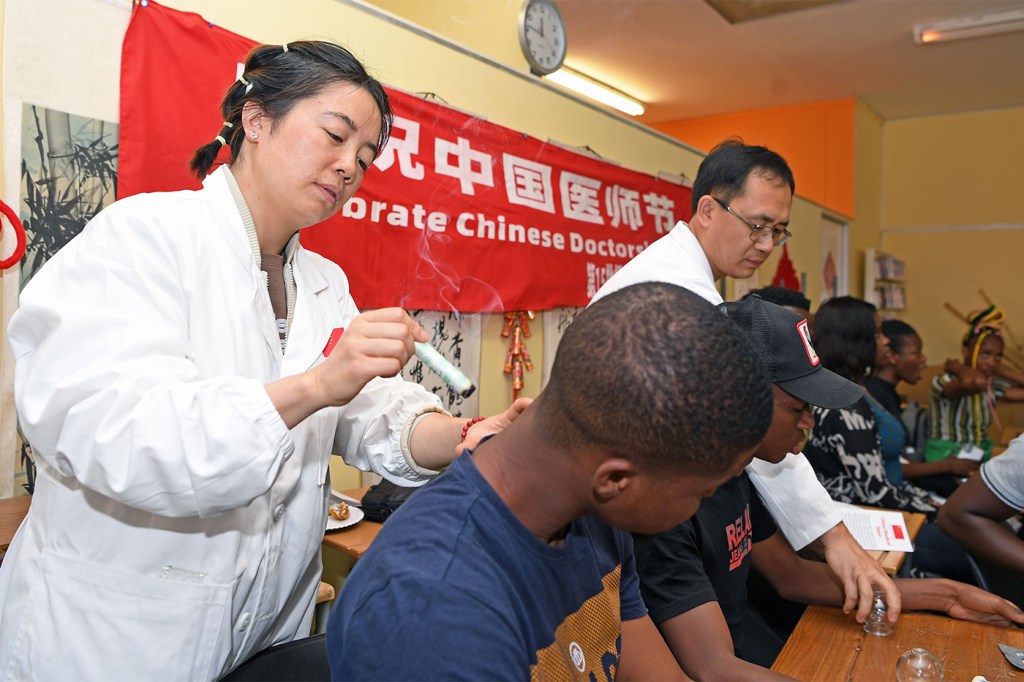Does traditional Chinese medicine work? Network science can help evaluate effectiveness, Northeastern researchers say
How new science can unlock the secrets of thousand-year-old natural therapies

In a striking example of old meets new, Northeastern University researchers say network science promises to be a powerful tool in evaluating the effectiveness of traditional Chinese medicine herbal remedies used for more than 2,000 years.
Traditional Chinese medicine, or TCM, has proved a challenge for researchers seeking to pinpoint the specific mechanisms by which it operates.
But now a paper in Science Advances says researchers established a network science framework that reveals the general principle for TCM treatment and a relationship between disease symptoms and herb targets.
The method establishes a scientific foundation for a therapy sometimes considered a myth, according to the report whose co-authors include Albert-Laszlo Barabasi, the Robert Gray Dodge professor of network science and a distinguished university professor of physics at Northeastern, and his former postdoctoral assistant Xiao Gan.

They say it could lead to world-changing drug discoveries based on a new understanding of natural and traditional medicine.
“There are hundreds, often over a thousand years’ experience in natural medicine,” Barabasi says. “Some of the collected wisdom has been confirmed by modern medicine, but most has not been tested or confirmed.”
“Traditional therapies such as TCM typically involve a complex system that conventional bio-medical scientific studies don’t know how to tackle,” says Gan, the paper’s lead author.
“For example in conventional medicine, one may be able to experimentally measure the treatment effect of a single chemical against a specified disease process,” he says.
“But this conventional paradigm is less effective in studying TCM, as no one knows which chemical in so many herbs may be relevant to an herb’s therapeutic effect. This makes pinpointing the effective target difficult.”
“This is where network science may help,” Gan says.
With complexity in mind, the researchers came up with a different strategy: to collect herb-chemical-target data systematically and search for generic patterns.
“The idea is that if there is a generic principle of how herbs are effective, this principle may be uncovered as statistically significant trends in a large dataset,” Gan says.
In the future, revealing the pattern may help researchers better focus on key therapeutic properties, he says.
Featured Posts
In particular, researchers developed a network medicine framework based on the human protein interactome, Gan says.
The idea is that drugs and diseases affect health by perturbing proteins, and protein interaction may mediate how drugs and disease affect each other in terms of treatment efficacy, he says.
“Studying the network topology of the human protein interactome might show patterns of how drugs treat diseases,” Gan says, noting that the network medicine framework is generic and not restricted to TCM.
“The therapeutic potential of each herb comes from the molecules it carries,” Barabasi says.
“A typical plant has about 5,000 to 10,000 distinct chemical compounds,” he says.
“A few of these are known as nutritional components that provide energy and vitamins,” the vast majority of which are small molecules that can bind to human proteins and modulate their activity, Barabasi says.
He says information about target molecules to which individual food compounds bind is known through experiments or can be predicted using computational tools like the AI-Bind tool developed in his lab.
“What we observed in the clinical dataset is that the effective herb-symptom pairs indeed have significantly more proximal network metrics,” which supports the theoretical model, Gan says.
The researchers used clinical data from 1,936 patients at the Hubei Provincial Hospital of Traditional Chinese Medicine in Wuhan, China. The clinical dataset included 218 herbs, Gan says.
“We’re hoping to validate the results with more experimental and clinical data,” Gan says. “We’re also exploring if our theoretical framework could help identify key chemicals or key mechanisms of action in herbal treatments.”
Researchers say in their report that “understanding the therapeutic effects of traditional and natural medicine can lead to drug discoveries that reshape world welfare.”
As an example, they cited aspirin, whose active ingredient, acetylsalicylic acid, is extracted from willow bark and has been used therapeutically for thousands of years.
Gan says what he and his fellow researchers found suggests “the possibility of a generic network pattern in disease-treating substances, be they drugs, herbs or natural chemicals.”
“Patients need all the help they can get — whether it comes in the form of drugs or through natural treatments like diet and herbs, when available,” Barabasi says.
“Network science offers the tools to unveil the potential molecular mechanism behind some herbs,” Barabasi says, adding that if it can lead to effective cures, “we must take advantage of it.”











